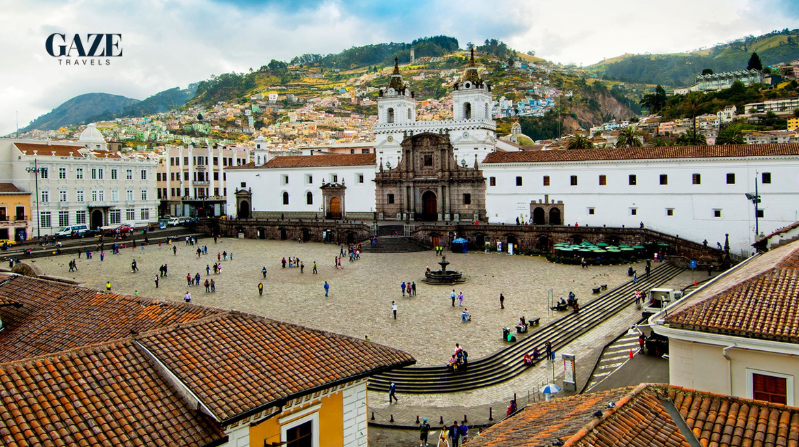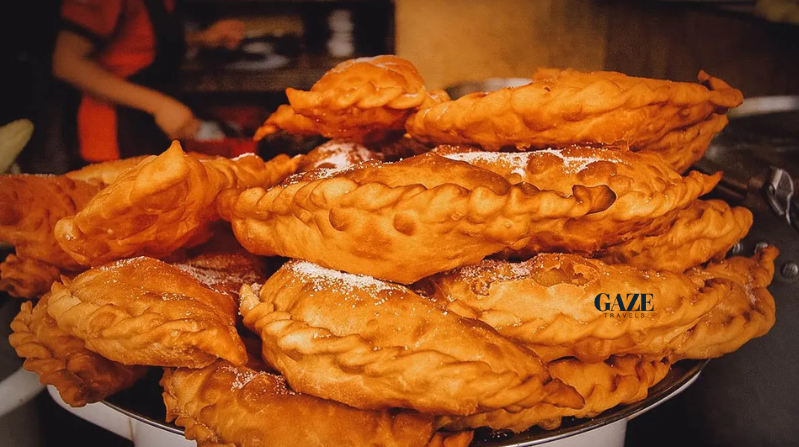Nestled high in the Andes Mountains, Quito, Ecuador, is a city that captivates visitors with its rich history, stunning landscapes, and vibrant culture. As the world’s second-highest capital city, perched at an elevation of 9,350 feet, Quito offers a unique blend of colonial charm and modern amenities. Wondering what to do in Quito Ecuador? This comprehensive guide will help you explore the top attractions, hidden gems, and exciting activities in this beautiful city. Whether you’re seeking adventure or cultural experiences, discovering what to do in Quito Ecuador will leave you amazed. Explore everything you need to know about what to do in Quito Ecuador and make the most of your visit to this hidden gem.
Quito at a Glance: A City of Contrasts

Quito is a city of fascinating contrasts, where centuries-old architecture meets contemporary urban living. The city’s historic center, a UNESCO World Heritage Site, boasts some of the best-preserved colonial buildings in Latin America. Narrow cobblestone streets wind their way past ornate churches, grand plazas, and colorful markets, offering glimpses into Ecuador’s rich past.
But Quito isn’t just about history. The city is also a bustling metropolis with a thriving arts scene, innovative cuisine, and modern neighborhoods that cater to every taste. From the trendy La Floresta district with its hipster cafes and street art to the business-oriented La Carolina area with its sleek high-rises, Quito offers something for everyone.
Key Facts About Quito:
- Population: Approximately 2.7 million
- Language: Spanish (official), but many in the tourism industry speak English
- Currency: US Dollar (Ecuador adopted the USD in 2000)
- Time Zone: ECT (Ecuador Time), which is UTC-5
Planning Your Trip to Quito

Best Time to Visit
Quito enjoys a relatively stable climate year-round due to its high altitude and proximity to the equator. However, the best time to visit is during the dry season, which typically runs from May to October. During these months, you can expect clear skies and comfortable temperatures, perfect for exploring the city and its surroundings.
“Quito’s weather is often described as ‘eternal spring’ – it’s rarely too hot or too cold, making it a pleasant destination year-round.” – Local tour guide
Weather in Quito
| Season | Months | Average Temperature | Rainfall |
|---|---|---|---|
| Dry | May-Oct | 50°F – 70°F (10°C – 21°C) | Low |
| Wet | Nov-Apr | 48°F – 68°F (9°C – 20°C) | Moderate to High |
Visa Requirements

Good news for many travelers: Ecuador has a relatively relaxed visa policy. Citizens of most countries in the Americas and Europe can enter Ecuador without a visa for stays up to 90 days. However, always check the latest requirements with the Ecuadorian embassy or consulate in your country before traveling.
Health Considerations

Given Quito’s high altitude, it’s essential to take precautions against altitude sickness. Here are some tips:
- Stay hydrated
- Avoid alcohol for the first day or two
- Take it easy on your first day, allowing your body to acclimatize
- Consider medication like acetazolamide if recommended by your doctor
It’s also advisable to be up-to-date on routine vaccinations and to consult with a travel clinic about any specific health precautions for Ecuador.
Getting to and Around Quito
Arriving in Quito

Most international visitors arrive at Mariscal Sucre International Airport, located about 45 minutes east of the city center. From the airport, you have several options to reach your accommodation:
- Airport Shuttle: A convenient and affordable option, running every 30 minutes.
- Taxi: Official airport taxis are safe and have set rates to different parts of the city.
- Uber: Available and often cheaper than taxis, but pick-up locations can be tricky at the airport.
Navigating Quito’s Public Transportation
Quito has an extensive public transportation system that’s both affordable and efficient. Here’s a breakdown of your options:
1. Ecovia, Trole, and Metrobus
These three systems form the backbone of Quito’s public transportation:
- Ecovia: Runs north-south along 6 de Diciembre Avenue
- Trole: Travels from the historic center to the south of the city
- Metrobus: Serves the northern part of Quito
All three systems use dedicated lanes, making them faster than regular buses during peak hours. A single ride costs just $0.35, making them an incredibly budget-friendly option.
2. Regular Blue Buses

These buses cover routes not served by the main systems. They’re a bit slower but can be useful for reaching specific destinations. The fare is the same as the main systems.
3. Taxis

Yellow taxis are abundant in Quito and can be hailed on the street. Always ensure the taxi is using a meter (taxímetro) or agree on a fare before starting your journey. For safety, it’s best to use registered taxis or ask your hotel to call one for you.
4. Uber

Uber operates in Quito and can be a convenient and often cheaper alternative to taxis. It’s particularly useful if you don’t speak Spanish, as you can enter your destination in the app.
You MIght Also Like https://gazetravels.com/japan-itinerary-7-days/
“Quito’s public transportation system is a lifesaver. It’s cheap, extensive, and relatively easy to navigate once you get the hang of it.” – Experienced traveler
Where to Stay: Quito’s Best Neighborhoods
Quito offers a wide range of accommodations to suit every budget and preference. Here are some of the best neighborhoods to consider:
1. La Floresta

This trendy neighborhood is known for its artistic vibe, great restaurants, and beautiful street art. It’s a favorite among young travelers and digital nomads.
Recommended stays:
- Blue Zone Apartments: Modern apartments with great amenities
- The Rocky House Executive Suites: Comfortable suites with a homey feel
2. La Carolina

Perfect for business travelers or those who prefer a more modern setting. This area is home to many international companies and upscale shopping centers.
Recommended stays:
- Hotel Stubel Suites & Cafe: Offers stunning views of the city
- NH Collection Quito Royal: Luxury hotel with excellent amenities
3. Guapulo

This picturesque neighborhood offers stunning views of the valleys surrounding Quito. It’s quieter than the city center but still has plenty of charm.
Recommended stays:
- Hotel Muros Quito: Boutique hotel with incredible views
- Olympus Apartments: Spacious apartments perfect for longer stays
Must-See Attractions in Quito
1. Teleferiqo and Rucu Pichincha


No visit to Quito is complete without a ride on the Teleferiqo, one of the highest aerial lifts in the world. The cable car takes you up the east side of Pichincha Volcano to an altitude of 13,000 feet, offering breathtaking views of Quito and the surrounding volcanoes.
For the adventurous, the hike to the summit of Rucu Pichincha (15,696 feet) starts from the top station of the Teleferiqo. It’s a challenging but rewarding trek that takes about 4-5 hours round trip.
2. Capilla del Hombre and Casa Guayasamin


Art lovers shouldn’t miss the Capilla del Hombre (Chapel of Man), a museum dedicated to the work of Ecuador’s most famous artist, Oswaldo Guayasamin. The adjacent Casa Guayasamin, the artist’s former home, provides further insight into his life and work.
3. Basilica del Voto Nacional

This neo-Gothic basilica is not only a stunning piece of architecture but also offers one of the best views of Quito’s historic center. Climb to the top of its towers for a panoramic view of the city.
“The climb to the top of the Basilica is not for the faint-hearted, but the view is absolutely worth it!” – Satisfied visitor
4. Historic Center (Centro Histórico)

Quito’s historic center is one of the largest and best-preserved colonial centers in Latin America. Key sites to visit include:
- Plaza Grande (Independence Square)
- La Compañía de Jesús Church: Known for its stunning gold-leaf interior
- San Francisco Church and Monastery
5. Mitad del Mundo and Museo Intiñan

Located about 25 km north of Quito, the Mitad del Mundo (Middle of the World) monument marks the equator line. Nearby, the Museo Intiñan offers interactive exhibits about the equator and Ecuador’s indigenous cultures.
You Might Also Like https://gazetravels.com/la-leona-waterfall/
Culinary Journey Through Quito
Quito’s culinary scene is a delightful mix of traditional Ecuadorian flavors and international influences. Here are some must-try dishes and experiences:
Traditional Ecuadorian Dishes

- Ecuadorian sancocho soup: A hearty soup made with corn, yuca, and meat
- Empanadas de morocho: Corn pastries filled with meat or cheese
- Humitas: Steamed corn cakes wrapped in corn husks
- Quesadillas de San Juan: Sweet pastries filled with cheese and eggs
Where to Eat in Quito

- Omama Coffee Shop: Great for breakfast and coffee
- Restaurante y Cafeteria Modelo: Try their famous empanadas de viento
- Endulce: Perfect for sampling traditional Ecuadorian sweets
- Casa de la Humita y Tamal Lojano: Specializes in humitas and tamales
“The almuerzos (set lunches) in Quito are an incredible deal. For $3-4, you can get a full meal including soup, main course, dessert, and a drink.” – Budget-conscious foodie
Safety in Quito
While Quito is generally safe for tourists, it’s important to take standard precautions:
- Be aware of your surroundings, especially in crowded areas
- Use official taxis or ride-sharing apps, especially at night
- Keep valuables out of sight and be cautious when using ATMs
- Stick to well-lit and populated areas after dark
The neighborhoods of La Floresta and La Carolina are considered among the safest for tourists.
Day Trips from Quito
Quito’s central location makes it an excellent base for exploring more of Ecuador. Here are some popular day trips:
- Mindo Cloud Forest: About 2 hours from Quito, Mindo offers great birdwatching and adventure activities.
- Cotopaxi National Park: Home to the iconic Cotopaxi Volcano, this park offers hiking, horseback riding, and stunning landscapes.
- Otavalo Market: One of South America’s largest indigenous markets, perfect for buying traditional crafts and textiles.
- Papallacta Hot Springs: Relax in thermal pools with a view of the Antisana Volcano.
You Might Also Like https://gazetravels.com/explore-paris-in-48-hours/
Conclusion: Why Quito Should Be Your Next Destination
Quito is a city that surprises and delights at every turn. From its well-preserved colonial architecture to its vibrant modern culture, from its breathtaking natural surroundings to its rich culinary traditions, Quito offers a wealth of experiences for every type of traveler.
Whether you’re climbing volcanoes, exploring museums, savoring local delicacies, or simply wandering the charming streets of the old town, Quito will leave you with unforgettable memories. So pack your bags, prepare for high-altitude adventures, and get ready to discover the magic of Ecuador’s captivating capital!
You Might Also like https://gazetravels.com/types-of-tamales/
FAQs
Is it safe to drink tap water in Quito?
No, it’s not recommended to drink tap water in Quito. Stick to bottled or filtered water to avoid any stomach issues. Most hotels provide bottled water, and it’s readily available in stores throughout the city.
Do I need to worry about altitude sickness in Quito?
Maybe. Quito sits at 9,350 feet (2,850 meters) above sea level, which can cause mild altitude sickness in some visitors. Symptoms may include headaches, fatigue, or shortness of breath. To minimize risk, stay hydrated, avoid alcohol for the first day or two, and take it easy as you acclimate.
What’s the best way to get around Quito?
Public transportation is the most cost-effective way to explore Quito. The Ecovia, Trole, and Metrobus systems cover most of the city and cost just $0.35 per ride. For convenience and safety, especially at night, use official taxis or Uber. Walking is great for short distances in the historic center, but be cautious of uneven sidewalks and steep hills.

Luna Smith is the experienced blogger behind Gaze Travels. With a passion for exploring new destinations and sharing travel tips, Luna brings her firsthand experiences and insights to every post, helping readers plan their adventures with confidence and ease

